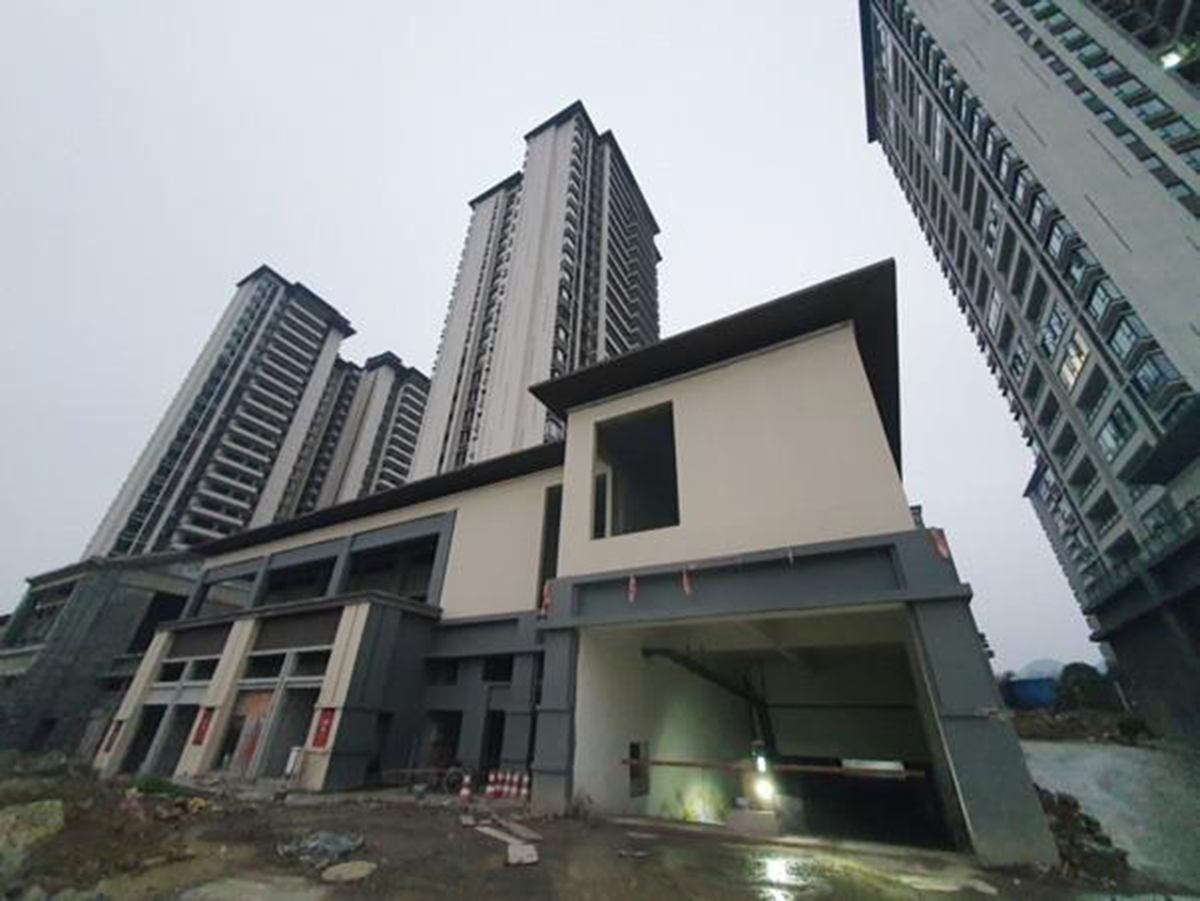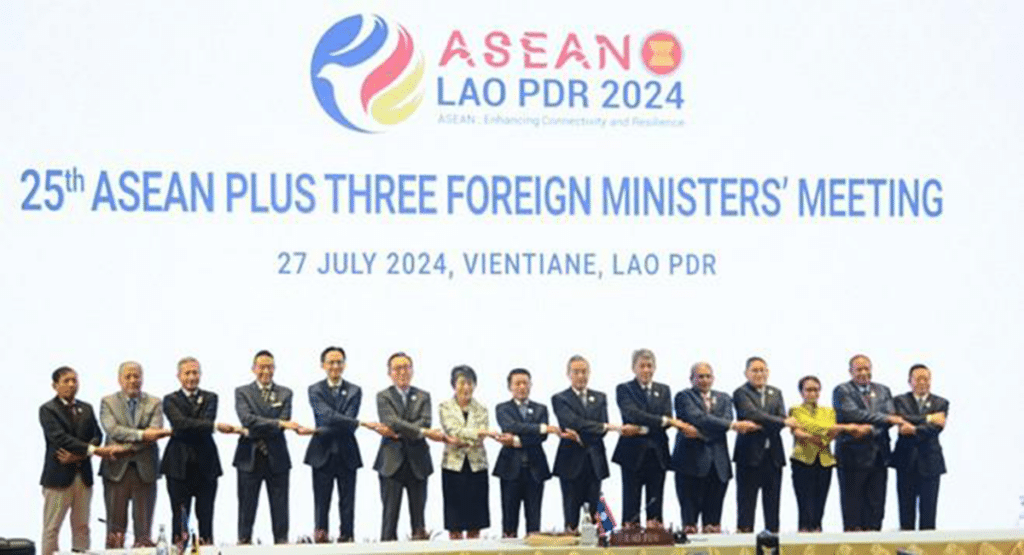milyon88 Japanese companies transferring production from China to Southeast Asia

Chinese real estate slump: Apartment buildings in Guizhou, China. (Photo from Jiji Press)
An increasing number of Japanese companies operating in China are transferring their production bases to countries in the Association of Southeast Asian Nations (Asean).
This comes as Chinese economic growth slows and concerns rise over the risks of doing business in China, where foreign residents have been arrested on vague grounds.
Article continues after this advertisementThe Chinese economy is stagnating, and this can clearly be seen in production, consumption and investments. The country’s gross domestic product (GDP) for the second quarter (April-June) of 2024 grew 4.7% year over year, which was 0.6 points lower than the first quarter (January-March). Economic data from August shows that retail business sales, an indicator of consumption trends, grew only 2.1% year over year.
FEATURED STORIES BUSINESS Buying gold can be this affordable BUSINESS PH remains heavily reliant on imported vehicles BUSINESS How hybrid rice can feed the PhilippinesREAD: PH, US, Japan agree vs ‘economic coercion’
The slump in the real estate industry is a major factor behind this. The real estate market and related industries make up a fourth of China’s GDP, but investments in real estate development fell 10.2% year over year in the period between January and August 2024.
Article continues after this advertisementDuring the COVID-19 pandemic, China implemented a “Zero-COVID Strategy,” which kept citizens indoors, dealt a major blow to the tourism and restaurant industries, and led to investments being concentrated in real estate. Home prices rose exponentially.
Article continues after this advertisementIn response, the Chinese government placed heavy restrictions on risky deals. This caused home prices to drop drastically, and the businesses of many major real estate developers declined. Down payments were made, but buildings never got built, and as similar cases followed one after another, the consumption trend cooled among the population.
Article continues after this advertisementFurthermore, the Chinese government, which places utmost importance on national security, established the Counter Espionage Law in 2014. This has resulted in many foreigners, including Japanese, being arrested for “espionage acts,” which are only vaguely defined.
Starting in July 2024, new regulations have been implemented that allow authorities to inspect the contents of electronic devices of individuals and organizations for acts of espionage, raising further concerns that even regular economic activities could be scrutinized. With little hope for significant growth in the Chinese market, coupled with the risks of doing business in China, direct international investments into the country fell 29.1% year over year between January and June 2024. There are also other issues, such as the risk of high tariffs on products produced in China and exported to the USA due to the ongoing tension between the two countries, as well as rising labor costs in China.
Article continues after this advertisementAgainst this backdrop, Japanese companies are turning their eyes to Southeast Asia for new bases of production. In January 2023, Sony transferred the manufacturing of its cameras for Japan, Europe and the USA from China to Thailand. Its factories in China now only make products to be sold domestically, allowing it to reduce dependency on the country.
Kyocera also plans to transfer a part of its electric tool production in China to Vietnam in fiscal 2024. The Vietnam site will mainly manufacture products to be sold in the USA to avoid the tariffs placed on exports from China.
According to Teikoku Databank, the number of Japanese companies operating in China decreased from 14,394 in 2012 to 13,034 in 2023. Many companies are choosing to relocate back to Japan or Southeast Asia. This can be seen in how Southeast Asian countries now occupy three of the top five locations in terms of the number of Japanese companies’ overseas subsidiaries: No. 1 is China, followed by USA, Thailand, Singapore, and Vietnam.
READ: More Asean nations offer help on South China Sea issue
Southeast Asia is attractive in many ways for Japanese companies. Not only is it geographically close to Japan but it also offers a rich pool of human resources with technical prowess and fluency in many languages including English, which allows companies to secure a stable labor force. Many Asean countries also have highly transparent fiscal policies and stable currency exchange rates. Cities have established solid infrastructure such as electrical power and transportation networks, making it easier for companies to build factories there and secure supply chains, from production and distribution to sales.
The Southeast Asian market is very appealing. The 10 Asean countries have a combined population of around 670 million people. It tops the population of the European Union (EU), which is around 450 million people and is the third largest in the world after India and China. The median age is also young, and unlike many developed nations, the region has not yet been faced with the issue of an aging society with a low birthrate.
The 2023 nominal GDP of the 10 Asean countries combined rose to around 3.81 trillion US dollars, which ranks right after the USA, China, Germany and Japan. It is forecast to overtake Japan’s GDP by 2030. Due to the effects of an aging population and low birthrate, there are concerns that Japan’s market and labor force will shrink going forward. Japanese companies will benefit greatly from operating and expanding their businesses in Southeast Asia, which has a large market, offers rich human resources and is referred to as “the world’s growth center.”

Foreign ministers of Asean, Japan, China and South Korea. (Photo by Jiji Press)
Japan and Asean countries have established various cooperative partnerships in politics, foreign policy and the economy. Japan is an active participant in numerous Asean foreign policy and security frameworks, including the East Asia Summit (EAS), which started in Malaysia in 2005, Asean Regional Forum (ARF), which discusses political and security issues, and Asean Defense Ministers’ Meeting Plus (ADMM-Plus), the only formal meeting of defense ministers in the Asia-Pacific region. In 2020, the Regional Comprehensive Economic Partnership (RCEP) was officially signed, including Japan, China, South Korea, Australia and New Zealand in addition to Asean. Building an open economic sphere by providing market access and establishing economic rules is accelerating active free trade, including small and medium-sized businesses.
While Southeast Asia is attractive to Japan, Japan must also be attractive to Southeast Asia. Southeast Asian company managers often say that decision-making is slow in Japanese businesses. They say this is due to a uniquely Japanese custom where multiple meetings are needed to make a single decision, and everyone has to then wait for it to be approved by the head office in Japan. Furthermore, Southeast Asians who grew up loving Japanese brands and anime are already in their 40s and 50s, while the attention of the younger generation, which is driving consumption, has been turning to South Korean and Chinese cultures as well. As such, greater efforts must be made to ensure that Southeast Asia will choose Japan as a partner.
Last year, Japan and Asean celebrated their 50th anniversary of cooperative partnerships. The relationship, in fact, began as one of animosity. Japan drew the ire of Southeast Asia by exporting massive quantities of cheap synthetic rubber to Asean, a producer of natural rubber, and that led to the holding of the Asean-Japan forum on synthetic rubber in 1973.
Subscribe to our daily newsletter
Friendly relations were established as Japan promised to take care not to interfere with Asean’s natural rubber industry. It was a perfect example of the proverb “After rain comes fair weather.” One could call 2024 the first year of the next half-century of new cooperative partnerships. Going forwardmilyon88, Japan’s efforts will determine how strong this partnership with Asean will become.
READ NEXT Safe manufacturer investing P1.5B for Pampanga plant Shareholders’ agreement EDITORS' PICK How to watch Gilas Pilipinas at Fiba Asia Cup qualifiers PNP to avoid lavish Christmas parties, spend more on typhoon relief Mary Jane Veloso’s ma fears for daughter’s life once back in PH Kathryn Bernardo, Alden Richards bring ‘Hello, Love, Again’ to global fans PH business registrations, renewals hit record high Solon: OVP, DepEd release of CF to various areas daily is impossible MOST READ Comelec house-to-house canvass in San Juan possible – poll lawyer Solon: OVP, DepEd release of CF to various areas daily is impossible House probe: OVP, DepEd CFs received by same man, different signatures UAAP: Harold Alarcon scores career high, UP beats UE ahead of Final Four Follow @FMangosingINQ on Twitter --> View comments